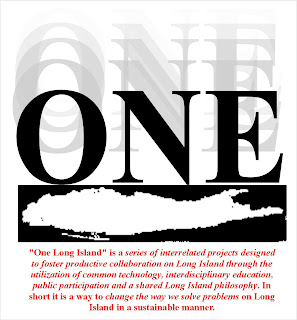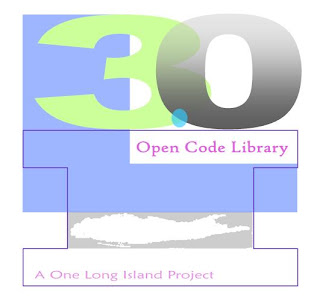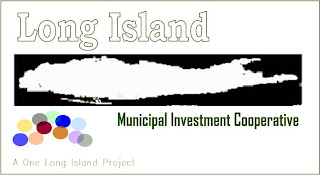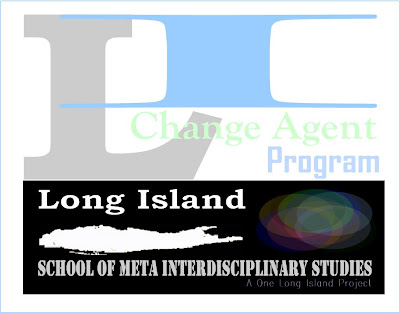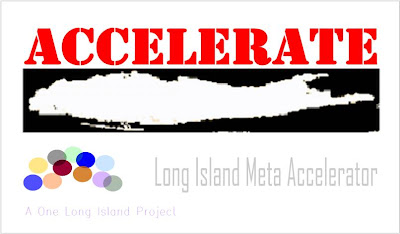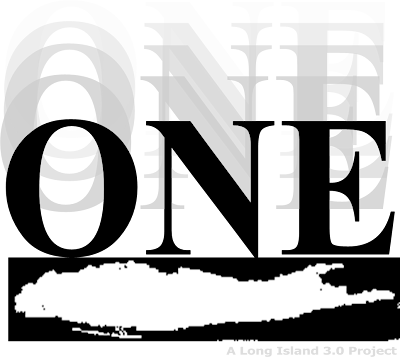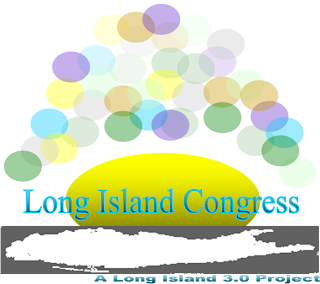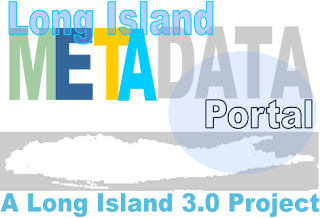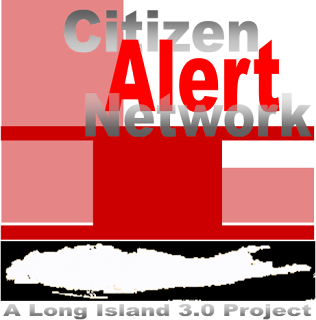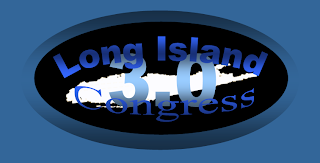
Monday, April 30, 2007
Dynamic Interaction/Types of Intelligence:Part One

Friday, April 27, 2007
A good start
I hope the DCJS will now begin to incorporate some of the ideas promoted here and here and that the state will not stop at this project but will create a simple emergency alert system for all entities in New York State.
Here's a recent article on an SMS based alert system. There are a ton of good systems out there. The trick is to make sure the state requires an open API so that any system or systems utilized don't become the "only" system or systems the state can use in the long term. Additionally, any alert system developed must operate on multiple platforms.
Hats off to Senator Skelos for getting the ball rolling.
Thursday, April 26, 2007
Thanks for reading ...
We need more Long Islanders writing (blogging) and exchanging ideas and yes, criticizing each other in a productive manner.
None of us has all the answers.
Thanks again.
A Confluence of Ideas and Information: Part One

Wednesday, April 25, 2007
Common Formulae: Part Two
It got me thinking whether there is a formula that would fit this aspect of Long Island's health into the Long Island 2.0 concept (among other concepts we've explored).
Maybe in part the formula can be constructed as follows:
If there are x number of government-education-other public buildings and there is y square feet of available space for solar panels then Long Island public facilities can generate z amount of power at bb rate minus cost of installation/cost of power and or federal or state subsidies (if any).
Of course the PBS program focused on how Sun Edison worked with local business to lessen the impact of peak power needs, so this partial formula could be applied there as well.
Here is LIPA's current solar energy program. I don't know how they determine the upside of solar or if a program like Sun Edison's is permissible in New York State.
All information is welcome.
Also look at MathML an XML based application which may be useful in constructing and implementing common formulae.
Tuesday, April 24, 2007
Semantic Web Blogging
Monday, April 23, 2007
Long Island 2.0: Part Two
Some of our previous posts have suggested a methodology, and with New York State's new focus on creating greater governmental efficiencies perhaps the time is drawing near for a comprehensive approach to problem solving. New York State's appointment of a panel of "governmental experts" is a good first step like some of the bi-county commission projects recently proposed, but without an overall systematic approach to problem solving and without the inclusion of a wide range of experts we may not advance as quickly or as thoroughly as we would hope.
Long Island, indeed, New York State, has some of the brightest people on this planet. The goal is to get them all working in a coordinated manner for the public good. Although we are attempting to create a dynamic and "virtual" method to address issues, our existing universities and library systems will play a vital role in the accumulation, categorizing and analysis of information both for public access and for public policy analysis and debate.
All "preconceived" notions of what government should be, how public communication and information should be transmitted and how public decisions are made (among only a few issues) should be placed to the side as we attempt to design a method for Long Island's (and New York State's) future.
As we have stated previously, there is more than enough funding in "the system" to accomplish this task. If designed properly, it will remove the barriers between organizations and foster a competitive environment for innovation and the "marketing" of Long Island and Long Island services and products as a region and a destination.
Long Island must make sure that its unique needs do not get consumed by the needs of New York State as a whole. Innovative thinking will allow regional autonomy on Long Island and for Long Island in any New York State plan. Any plan which disregards the public distrust of "government" (the bigger the government the greater the loss of control and trust) and seeks to unreasonably limit local autonomy is destined to encounter severe trouble and possible failure. It may be harder to allow autonomy within a larger system, but it also promotes diversity and innovation. A "one size fits all" approach rarely works.
Perhaps a "Long Island 2.0" or "Long Island 3.0" Commission is something our state government could address in the near future. The world will change with or without us, so why not be proactive?
Friday, April 20, 2007
Long Island 2.0: Part One
Many of the ideas contained in this article are important as we head towards an integration of knowledge and technical sophistication on Long Island: Long Island 2.0.
We've explored some of them already and will continue to try to bring it all together in a practical and simple manner.
Common API:Part One

Wednesday, April 18, 2007
Create a simple public alert system
It's inexpensive to accomplish and the information can be received on a variety of devices. It may even be coupled with SMS and other technologies to form a very inexpensive way to contact the general public for any emergency notification.
Government could even create its own inexpensive software and devices to distribute free to the public for those few who do not have access to the technology already. With a little coordination and training there is really no reason anyone in the public should be without access to immediate emergency information.
XML. Inexpensive, easy and effective.
Tuesday, April 17, 2007
Common Formulae: Part One
I am using formulae in the broadest sense of the word here and only as a concept (since I make no claims on any expertise in this area!).
For example to determine the number of housing units linked to job growth needed on Long Island maybe a partial formula could include:
If reasonable workforce housing should cost between $ and $$$ and if X acres of land that can be developed is available on Long Island and Y number of people current reside on Long Island and Z number of people is the sustainable population limit of Long Island and there is XX number of land parcels that can be developed for business development on Long Island and Long Island Business employs YY number of people and there is sustainable limit of ZZ number of employees on Long Island and the average wage of employees should be between AAA and BBB to afford workforce housing THEN Long Island needs AAA number of Housing Units and BBB number of Jobs Making $$$ in VVV Types of businesses.
Of course this is an oversimplification and certain terms have to be defined through the processes previously described in other posts, but the concept of formulae and matrices and algorithms to arrive at public decisions may cut down on the overheated rhetoric that sometimes accompanies decisions of this type. Also see MathML.
If we can agree to certain standard of not only data organization but the methods by which we analyse data, then perhaps we can take some of the confusion out of the public discourse.
Monday, April 16, 2007
Some interesting developments ...
Pulling LI together
Bicounty panels can help region better meet its housing needs
April 16, 2007
On Long Island, the broad issues of regional cooperation and planning are inextricably bound up with such specific concerns as the need for affordable housing. So it's useful that two parallel developments are offering some hope for both better regionalism and more movement on housing.One is the effort by Riverhead Supervisor Phil Cardinale, president of the Suffolk County Supervisors' Association, to invite town supervisors from Nassau to a meeting May 2 to discuss these issues. It's helpful that Michael White, executive director of the Long Island Regional Planning Board, will be there. A full turnout of elected officials would be a healthy sign.
There's a possibility that meeting might lead to the formation of a Council of Governments, a mechanism for getting municipal leaders communicating on the issues (without adding a new layer of government).Towns and villages control zoning. Some have done a good job on affordable housing, some have not. And some towns fear they'll bear too big a share of the housing "burden." There are ways to spread the responsibility. A Council of Governments is one. If municipal officials meet regularly and talk openly about their plans for housing and other initiatives, that communication could serve to reduce fears and share the best ideas and practices. The creation of a council could also help the regional planning board. In recent debates about reconstituting the board, Legis. Lisanne Altmann (D-Great Neck) held out for strong municipal representation. That didn't happen. Now, with a Council of Governments in prospect, Altmann plans to sponsor legislation further expanding the regional board, to include two persons from each county representing its municipalities. Those representatives on the board would also be on the council and could act as a liaison between the two. The board could supply solid data and ideas, to help the council act. This interaction between two entities could be a useful way forward for the region. "
http://www.newsday.com/news/opinion/ny-vpcog165173659apr16,0,6468468.story?coll=ny-editorials-headlines
It's always a good idea to get groups with complimentary issues together. We think they can accomplish more with some of the ideas (and others) we've previously posted here. Agreeing to talk and meet is a good first step.
A "Council of Governments" will not be enough however without a coordinated effort of the best minds on Long Island no matter what their field of study. Getting anything concrete done will have to be based on accurate information, detailed analysis and leadership.
What is proposed however, should be given an opportunity to succeed.
Friday, April 13, 2007
Social Networking Theory and Long Island: Part One
What is the composition of the social network or social networks of Long Island? How do we, as a region communicate with one another and with the "outside world?" Is there a Long Island "collective mind?" Will this "collective mind" eventually supplant traditional information and news sources?
Long Island is a diverse region and we protect our diversity and our individuality. No matter the community organization, government or media outlet, we strive to be the best. That should be a good thing and for the most part it is. But perhaps we, as a region are so competitive with one another we miss the greater opportunities cooperation offers.
Our previous posts on a LIWIKI and LI Metadata project and Virtual Community Congress are attempts to begin to forge the dichotomy between autonomy and coordinated efforts for the public good. In future posts we will try to tie this all together in a simple format.
Because as we all know, if it isn't simple to use and understand, it's probably doomed to failure. Not because of a lack of intelligence, just from a lack of time. Even with the best intentions these types of projects are difficult.
Can't hurt to try however.
Wednesday, April 11, 2007
LIWIKI Update

Peer-to peer WIKIs may be integrated into standard WIKIs as well as other web-based and xml based solutions including the Semantic Web.
I'll keep digging. The answer is out there somewhere.
Tuesday, April 10, 2007
Long Island Metadata Project: Part Two

How do we begin to organize this type of large scale project?
Perhaps the best way is by gathering and defining the subgroups of data available, the format the data is currently in, the organization(s) holding the data and any legal impediments to obtaining the data. Is this a government function? Probably not. It would best be started by a consortium of foundations/community organizations/educational institutions working in cooperation with one or more governments participating as an initial test case for gaging any difficulties. It must be a non-partisan, non- "agenda driven" project or it will never get off the ground.
For example, each municipality has its own zoning code (all are subject, with some variances, to the uniform NYS Building and Fire Codes however) and own method of categorizing land use and tax information. How do we maintain the autonomy of each municipality, yet have a method of "converting" or "translating" this information into one "comprehensive" Long Island land use map (GIS) which we can use to analyze regional issues? How can we integrate County, State and Federal information into this project and "translate" all the different codes and designations so that we are all "speaking the same land use language?"
Where will the funding come from?
I believe there is more than enough money "in the system" from private and public sources to fund this project with some minor reallocation. We're not talking about creating another bureaucracy or agency to do this. If organized and designed correctly, efficiencies should build on efficiencies with open lines of communication and common methods of accomplishing the same task becoming the norm rather than the exception. The main cost will be in the conversion of data or creation of common API and other communication devices and software, most of which are already being funded in one way or another ( Oyster Bay 2000 Data Highway/Central data access-multi platform) .
As we all know, the communication revolution is well underway and seemingly progresses exponentially every day. Long Island can not afford to lag behind the "revolution" if it hopes to remain relevent to the world economy and in maintaining and improving an advanced standard of living for all its residents.
Monday, April 9, 2007
Virtual "Community Congress": Part One
It's not that government doesn't have a role, it's just that it is impossible for government to do everything that its citizens desire without having a significant tax impact. Also, there are a number of bright individuals in all our communities who have great ideas and services to offer, but may not have an organized forum to propose and debate these ideas and to offer these services. At the time I proposed the Community Congress, I conceived of it primarily as a body of individuals who actually "physically" met from time to time. But today, with the advancement in Web 2.0 and other technologies, perhaps a "virtual" Community Congress is a better choice as a primary mode of communication. A sort of better organized, standardized and more interactive "blogosphere" concept.
It's been my experience that most Long Island resident do wish to be cooperative productive citizens. They do, however, require information which is as accurate and unbiased as humanly possible. There is a profound distrust regarding information we receive from traditional sources and perhaps there always has been. How then do we begin the process of a more open dialogue? Is it even possible anymore to have productive dialogue not linked to individual personal advancement (or an organization's need to be influential) and the personal destruction of those we disagree with?
A tall order to be certain and one that will not be solved overnight or on one individuals or organization's timetable. I believe a good place to start is with the organization of data on Long Island and converting this Long Island data into a "dynamic" and "interactive" format (see LI Metadata). We need to establish ground rules and boundaries for us to begin the dialogue (some would say continue the dialogue) and have a long term, rational solution to problem solving which comports with short term and medium term needs and desires. Not easy, but necessary.
One of the best things about Long Island is its individuality and its abundant resources of some of the brightest people on the planet. Long Island is like one big abstract jig-saw puzzle of organizations and ideas. Going forward we hope to help construct a reasonable methodology for allowing these folks to help shape Long Island's bright future and solve the puzzle.
Friday, April 6, 2007
Hyperlocalism and consolidation: Part Two
Education, communication and proper analysis first. If that leads to consolidation through public referendum, so be it. We can't start with the determination that consolidation is the answer, then look for the analysis to back up the claim. That's a disingenuous approach to solving this particular issue.
In Part One we posed the question as to whether "In the near future, will communities and individuals rely more on one another for accurate information than on the media or government?"
What information, in fact should we require from our traditional media and or government? Who can we trust?
If we proceed on the notion that most people have a fundamental distrust of government and that one of traditional media's primary responsibilities is to "watch" government for us and to report fairly and accurately what they find, then we are probably not too far off base. The more interesting phenomenon is the rise of bloggers and other "non-traditional" media who are "watching" and reporting on the traditional media. What used to pass for fair and accurate reporting and commentary, is now subject to a whole new and more powerful layer of scrutiny.
Is this a good development? That depends upon many factors. With government we can get most of the information we seek through FOIL and always have the option of electing someone new if we don't like the direction of our government. Not always easy, but then democracy wasn't designed to be easy. The proposals presented here and here are an attempt to make information more understandable and accessible for productive purposes.
With traditional media the issues are more difficult. One never really knows whether all the relevant information is being presented or just that information that particular media outlet wishes us to have. As "private" entities, that is their right.
What non-traditional media gives us is an alternative. A sort of "from the ground up" approach to news and information that recalls the days of the village green and the sort of free expression we all covet. Of course, this type of freedom has pitfalls as well. Bloggers, citizen journalists, bulletin boards and anonymous web sites may spew terrible and inaccurate information without any oversight. At least traditional media goes through the motions of ensuring fairness although there is a growing movement among bloggers as well for a code of ethics.
Is there a workable nexus between public information, traditional media and the new media? Perhaps, if we recognize that no system, person or organization will be perfect and we allow ourselves to be open to new ideas and methodologies.
Is is naive to think that there is a "critical mass" of individuals and organizations on Long Island who can come together for such a project? Again, perhaps. But if we don't, we will doom ourselves to constantly "chasing our tail" with static reports that sit on a shelf and eye catching headlines which may sell papers but only serve to further bad feelings among the different groups on Long Island.
In Part Three we will explore some possible methods for "lowering the temperature" and elevating reasoned debate in an attempt to form a productive path for Long Island's future.
Thursday, April 5, 2007
Long Island WIKI (LIWIKI): Part One
 A WIKI is defined as "a website that allows visitors to add, remove, edit and change content, typically without the need for registration. It also allows for linking among any number of pages. This ease of interaction and operation makes a wiki an effective tool for mass collaborative authoring. The term wiki can also refer to the collaborative software itself (wiki engine) that facilitates the operation of such a site, or to certain specific wiki sites, including the computer science site (the original wiki) WikiWikiWeb and online encyclopedias such as Wikipedia."
A WIKI is defined as "a website that allows visitors to add, remove, edit and change content, typically without the need for registration. It also allows for linking among any number of pages. This ease of interaction and operation makes a wiki an effective tool for mass collaborative authoring. The term wiki can also refer to the collaborative software itself (wiki engine) that facilitates the operation of such a site, or to certain specific wiki sites, including the computer science site (the original wiki) WikiWikiWeb and online encyclopedias such as Wikipedia."
We're taking about something much more advanced and interactive than this.
Obviously there would need to be some ground rules in place to prevent the entry of "non-productive data" and the ability of any group to alter another groups data, but these are reasonably simple fixes. Additionally, it is possible the entire project could be self-sustaining through corporate and foundation sponsorships.
1. Level one is to identify organizations in a number of diverse fields capable of providing both primary source data and analytical skills. This intitial set of organizations will have the duty of "de-bugging" the process and laying the groundwork for additional organizations to be added. Agree on the design of the LIWIKI and the methodologies to be employed.
2. In addition to the data, arrive at a number of prescribed formulae to initially analyze incoming data. "Ad hoc" reporting capability in "virtual" real time is the ultimate goal.
3. Level two of the LIWIKI is an "ideas" forum for those not yet admitted to level one, but believe they have important information that should be included as a level one participant. Level two participants always have the option of participating through Level One participants or informally on the LIWIKI.
4. Identify external data (data not generated by Long Island organizations) and determine how to integrate it into the LIWIKI process.
Obviously, a LIWIKI is just one idea for beginning the collaberative process. We will expand upon this idea as well as others in upcoming entries.


